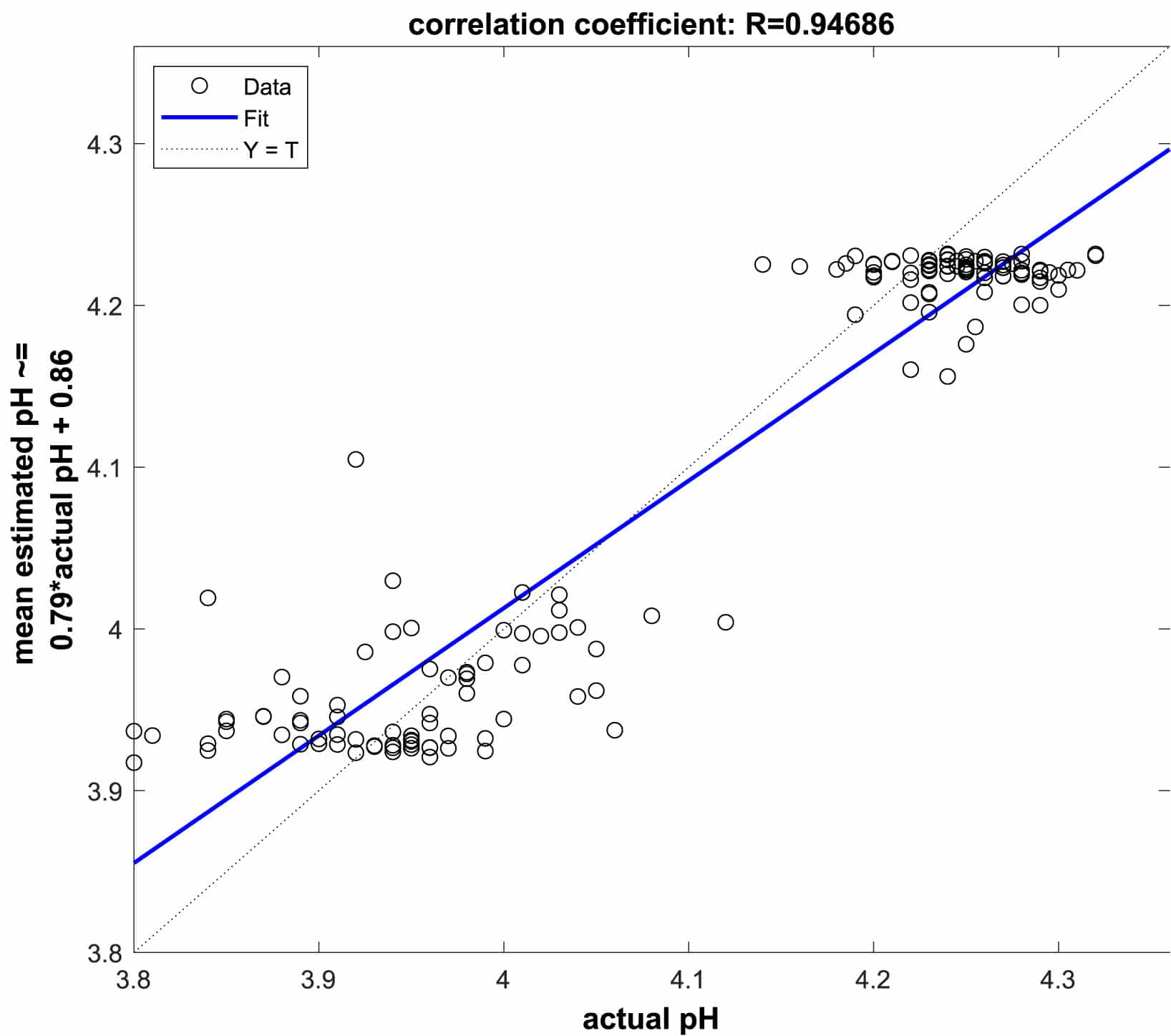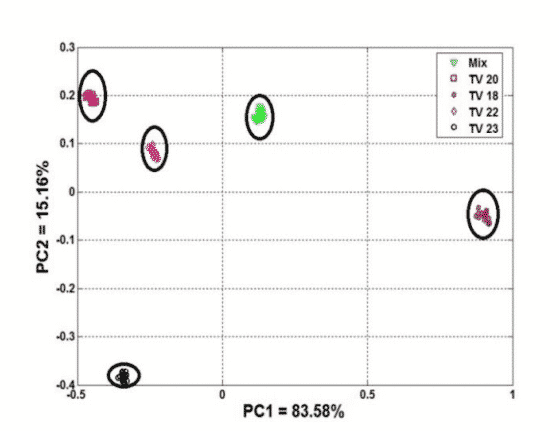
Predicting Freshness of Peppers with VIS-NIR Reflectance
Portable NIR Analyzer for Small Grain Crops, Beans, and Seeds
Firmness, Acidity (pH), & Starch Analysis of Apples with Reflectance
New Handheld Raman for Oil Authentication
Black Tea Classification using NIR
Fish Freshness Assessment using NIR
Predicting Freshness of Peppers with VIS-NIR Reflectance
Several researchers at the University of Bonn, in Germany, recently published a paper, “Non-Destructive, Opto-Electronic Determination of the Freshness and Shrivel of Bell Pepper Fruits”. In their research, they set out to identify suitable parameters to determine the degree of freshness of Bell pepper fruits of three colors (yellow, red, and green) over a two-week period including the occurrence of shriveling using non-destructive real-time measurements. During storage and shelf life, they determined bell peppers lost 2.9–4.8g per day. Shriveling started at 6–8% weight loss after 4–5 days and became more pronounced. The researchers determined that a color value alone was not predictive of freshness or shrivel. They also found the light reflectance peak at 630–633 nm was universal, irrespective of fruit color and freshness. Hence, a freshness index based on the difference in relative reflectance in % between 630nm and 500nm as well as a few other parameters would be the best way to predict freshness in bell pepper fruit.


VIS-NIR spectral reflection of the pepper with different degrees of freshness and shrivel were measured non-invasively with a portable BLUE-Wave miniature spectrometer with data processing using SpectraWizTM software, supplied with the instrument. Measurements were made over the 500–850nm wavelength range using an SL1 Tungsten halogen light source and an R600-8-VisNIR reflectance probe to provide a measuring spot of 2mm with a measurement time of less than 1s. Read more
Portable NIR Analyzer for Small Grain Crops, Beans, and Seeds
- Easily analyze the composition of small grains, beans, forage, meats, and more
- Instantaneous, real-time results
- Rugged and portable for field, at line, or laboratory applications
- Simple to use with little to no sample preparation required
- Many starter calibration are available including cowpea & soybean added in 2020
Learn more
Firmness, Acidity, & Starch Analysis of Apples with Reflectance
Researchers at the University of Mohaghegh in collaboration with the University of Salamanca have used spectroscopy to estimate different physicochemical properties of Fuji apples, including firmness, acidity (pH), and starch. The researchers measured various apples at different maturity stages using visible and short wave near-infrared 400–1000nm. The team used linear (partial least squares regression, PSLR) and non-linear (artificial neural network, ANN) regression for estimation of apple firmness, acidity (pH), and starch and bests the correlation coefficients of prediction at 0.849, 0.930, and 0.967 using non-linear ANN approach. Read more…
New Handheld Raman for Oil Authentication
- Handheld Raman Analyzer for material identification and verification
- Robust and reliable design
- Easy-to-use, “App Style” software interface includes libraries for chemical identification, explosives, narcotics, food additives, and more
- Save/Search functionality. Save your samples and then search for matches
- Learn more
Black Tea Classification using NIR
Black tea is referred to as a marvel beverage for its antioxidant properties. The proper consumption of tea helps us fight against various diseases like Alzheimers, Parkinsons, and cancer, so monitoring its quality is important. Researchers at Jadavpur University in collaboration with the Tocklai Tea Research Institute have used NIR spectroscopy to discriminate different clones of Black Tea. This allows for the separation of black tea samples by the geographic origin of the samples. This would benefit the end-users as they would be able to identify genuine Tea and reject fake/false claims for counterfeit goods.

A DWARF-Star NIR spectrometer was used to collect the required data. The samples were taken in a crystal container and placed on top of the RFX reflectance fixture with an integrated Tungsten Halogen light source as shown in the figure. Repeated readings were taken at different positions of the container. Spectral data clustering has been performed on the raw dataset using PCA. The class separability measure has been calculated and an SI value of 17.32 was obtained. Read more...
Fish Freshness Assessment using NIR
Fish is a very delicious food item that we have all come to enjoy. Unfortunately, it deteriorates very fast in normal storage conditions and freshness is extremely important for consumers. Due to physical, chemical, biochemical, and microbiological activities, a non-contact rapid means to detect fish freshness would be an invaluable tool for the worldwide fish market.



Researchers at Jadavpur University have also analyzed fish freshness using near-infrared spectroscopy using similar methods and have been able to create a separability index of over 800 using PCA methods. That is, the distinguishability of fish day 0,4,7, & 12 after refrigerated storage is very, very good. Read more…
If you are interested in our other meat analyzers, please check our Analyzers for Industry page
We wish everyone a Happy Thanksgiving holiday season. Feel free to drop us a line at ContactUs@StellarNet.us and see your idea become our next fun App note.















